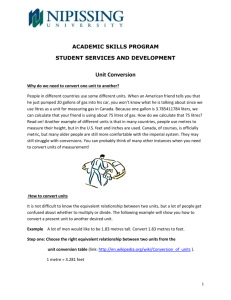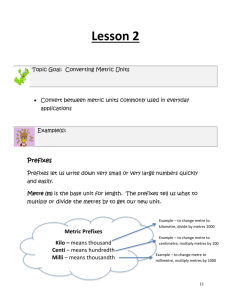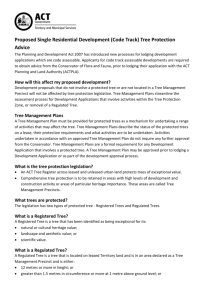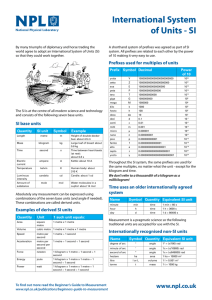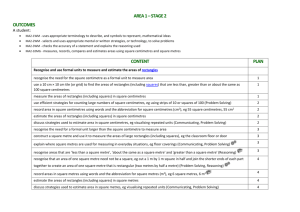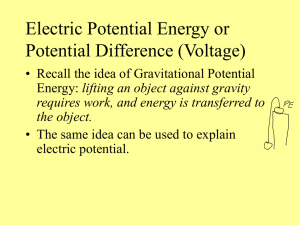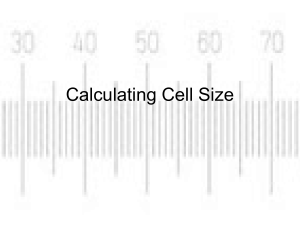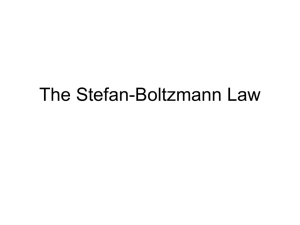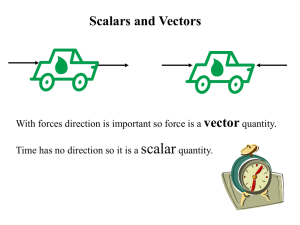LEN - S1 - Plan 8 - Glenmore Park Learning Alliance
advertisement
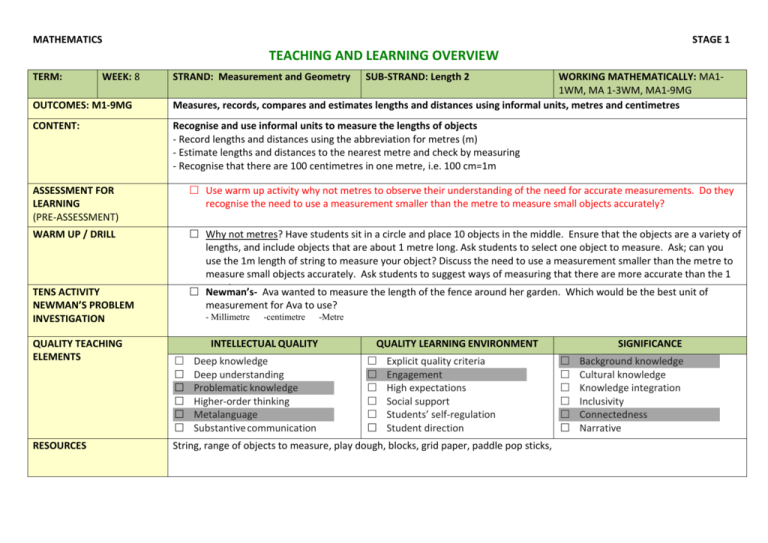
MATHEMATICS STAGE 1 TEACHING AND LEARNING OVERVIEW TERM: WEEK: 8 OUTCOMES: M1-9MG CONTENT: STRAND: Measurement and Geometry SUB-STRAND: Length 2 WORKING MATHEMATICALLY: MA11WM, MA 1-3WM, MA1-9MG Measures, records, compares and estimates lengths and distances using informal units, metres and centimetres Recognise and use informal units to measure the lengths of objects - Record lengths and distances using the abbreviation for metres (m) - Estimate lengths and distances to the nearest metre and check by measuring - Recognise that there are 100 centimetres in one metre, i.e. 100 cm=1m ASSESSMENT FOR LEARNING (PRE-ASSESSMENT) Use warm up activity why not metres to observe their understanding of the need for accurate measurements. Do they recognise the need to use a measurement smaller than the metre to measure small objects accurately? WARM UP / DRILL Why not metres? Have students sit in a circle and place 10 objects in the middle. Ensure that the objects are a variety of lengths, and include objects that are about 1 metre long. Ask students to select one object to measure. Ask; can you use the 1m length of string to measure your object? Discuss the need to use a measurement smaller than the metre to measure small objects accurately. Ask students to suggest ways of measuring that there are more accurate than the 1 string. m Newman’sAva wanted to measure the length of the fence around her garden. Which would be the best unit of TENS ACTIVITY NEWMAN’S PROBLEM INVESTIGATION QUALITY TEACHING ELEMENTS RESOURCES measurement for Ava to use? - Millimetre -centimetre INTELLECTUAL QUALITY Deep knowledge Deep understanding Problematic knowledge Higher-order thinking Metalanguage Substantive communication -Metre QUALITY LEARNING ENVIRONMENT Explicit quality criteria Engagement High expectations Social support Students’ self-regulation Student direction String, range of objects to measure, play dough, blocks, grid paper, paddle pop sticks, SIGNIFICANCE Background knowledge Cultural knowledge Knowledge integration Inclusivity Connectedness Narrative TEACHING AND LEARNING EXPERIENCES WHOLE CLASS INSTRUCTION MODELLED ACTIVITIES Explicitly communicate lesson outcomes and work quality. Teach and review- They need to make a measuring divide using informal units before using a ruler. When recording measurements a space should be left between the number and the abbreviated unit e.g. 3 cm, not 3cm. Refer also to background information in Length 1 Define and Reinforce metalanguage used in the unit e.g. length, distance, straight line, curved line, metre, centimetre, measure, estimate Activity- Where Is metre used? As a class, brainstorm situations in which students have heard the term ‘metre’ used. Ask: What types of things are measured in metres? What is the abbreviation for metres? Assessment- measuring distance Have students use their 1 metre length of string to measure the distance between places in the school eg between the classroom door and the computer desk. Students record their answers eg I measured between _______ and _____ = _____metres GUIDED & INDEPENDENT ACTIVITIES LEARNING SEQUENCE Remediation ES1 LEARNING SEQUENCE S1 LEARNING SEQUENCE Extension Early S2 EVALUATION & REFLECTION Activity- Longer than, shorter than our string -Students in pairs are given a piece of string. They then move around the classroom to find, as many objects as they can that are the same length as, longer than or shorter than the string. Students record their findings by drawing and labelling. Ask students what they found out when they were measuring? Activity -Order the group -Order from longest to shortest, three or more lengths which students have to straighten out and lay side by side, e.g. a skipping rope, a length of string and a rolled up streamer. Record and label the lengths as longest and shortest. Report the results using comparative language. Activity- Students make a tower that is a metre tall, make a metre snake using play dough, repeatedly trace around your hand to find out the number of handprints that equal 1metre, place pop sticks end to end until the line formed is 1 metre long. Investigation Activity- How many centimetres in a metre? Students make a metre strip using 1cm grid paper, In groups, students randomly cut their metre into 3 pieces and place all the group’s strips into a bag. Students take turns to select and measure one strip. Students estimate and calculate what length strip they would need to add to their selected length to make exactly one metre. They are asked to explain how they know it will be 1m. Calculations for each strip are recorded in a table. Variation- students take two strips that together are less than 1m, measure them and add the lengths together. They estimate and calculate how long a third strip would need to be to make exactly one metre. Activity - Worms Students make ‘worms’ using play dough. Students estimate, measure and label the length of their ‘worms’. Some students will have the same length written in a different form e.g. 20 cm, 0.2 m or 200 mm. Students then order their worms in terms of length and note the different ways to record the same length. Possible questions include: ❚ could you estimate, measure and record the length of your ‘worm’? ❚ did you recognise the length of your worm recorded using a different unit? ❚ could you record your measurement using decimal notation to two decimal places? ❚ could you convert your measurement to millimetres? Centimetres? Student engagement: Achievement of outcomes: Resources: Follow up:

